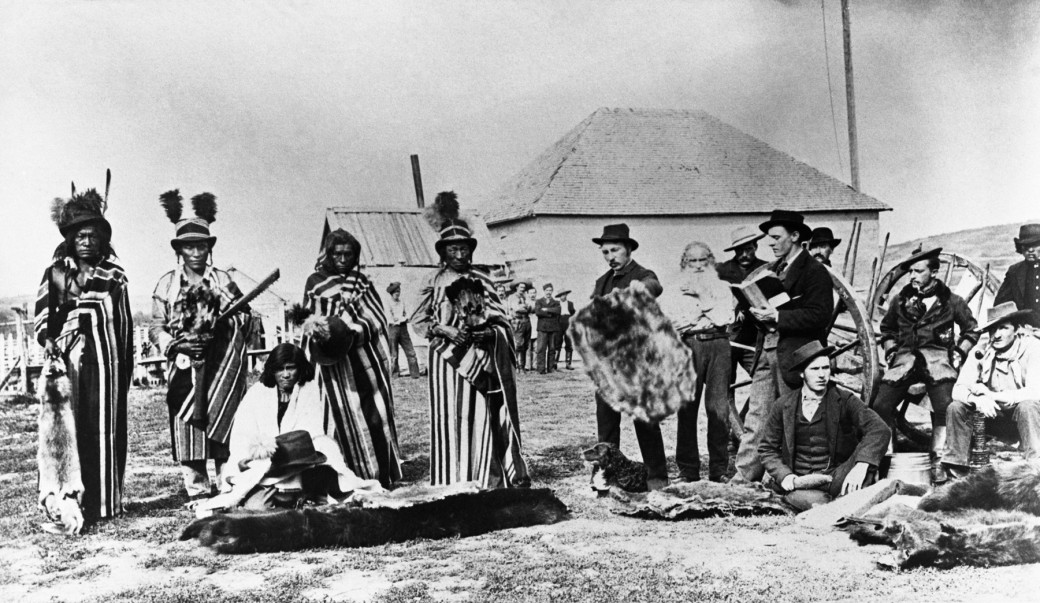Government mail service may be affected by the Canada Post labour disruption. Learn about how critical government mail will be handled.

Rising tensions
The events at Frog Lake occurred during a time of heightened tension between Prairie First Nations and the Government of Canada. The Plains Cree were faced with severe food shortages due to the sharp decline in bison herds and the government’s decision to withhold rations that had been promised in Treaty 6.
The understanding of what happened at Frog Lake, near the provincial border with present-day Saskatchewan, has changed dramatically since 1885.
More recent research and insights from oral histories have shown that Canada’s First Nations policies contributed to the tragedy at Frog Lake, further illuminating the complexity of the Plains Cree peoples’ situation and their efforts to maintain peace.
Chief Big Bear tried to improve conditions for his people, making formal pleas to the federal government about unfulfilled terms of land and Treaty 6 rights that were agreed upon in 1879.

As the situation grew more desperate, Big Bear started to lose control over his band and a breakaway group of warriors led by Wandering Spirit marched to Frog Lake to demand food.
The tensions boiled over into violence and an attack on the settlement that left nine people dead. Six Plains Cree individuals were eventually tried and hanged as a result at the North West Mounted Police post at Battleford, Saskatchewan in November 1885.
Losses
The rapid and confusing series of events resulted in 9 fatalities, 3 seized hostages, and structures in the small community - comprised of a Roman Catholic mission, a Hudson’s Bay trading post, and federal government agencies - torched to the ground.
Historic designations
The 1.6 hectare Frog Lake Historic Site - amid rolling aspen spruce parkland, 3.5 kilometres south of the Village of Frog Lake and 13 kilometres northeast of the North Saskatchewan River - was designated as a Provincial Historic Resource on June 15, 1976.
Frog Lake is also a National Historic Site, as it tells: “A story of hardship, confusion, hunger and a retaliation that would cost the community everything.
... (It is) a pivotal and difficult period of transition from a landscape defined by First Nations and Métis cultures within a traditional and fur trade economy to a territory of Dominion of Canada ruled by its institutions, laws and vision of an agricultural economy,” according to the Parks Canada Frog Lake web page.
Features
This now quiet, contemplative place features a commemorative cairn installed in 1924 , a small cemetery containing the remains of 7 of those who died at the site and an interpretive trail with panels exploring the historic context of the Frog Lake confrontation.
This is a non-operational site with no Visitor Reception Centre.
The site offers an excellent opportunity for visitors to enter into the complex and often tragic history which culminated in the events at Frog Lake and to consider the ways in which the violence at this site shaped the lives of First Nations’ peoples and their relationship to the federal government.